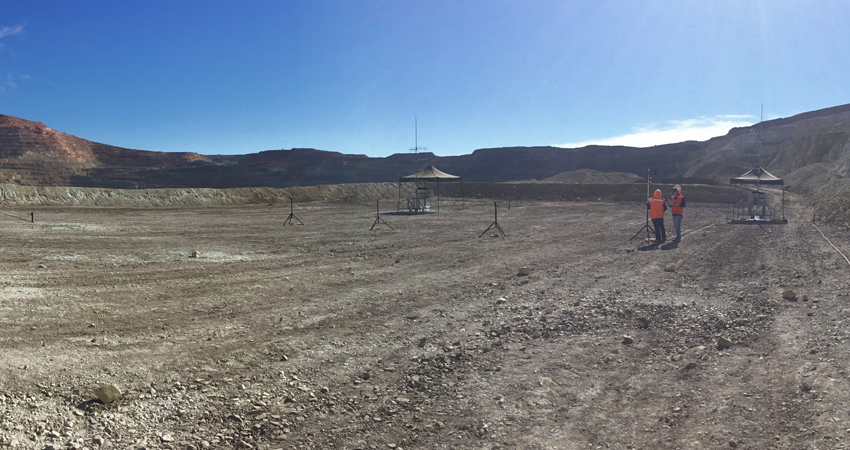Innovation Around Air Quality
Carmen de Andacollo Operations (CDA) is at the forefront of developing new and innovative ways to improve air quality, including a new pilot project that uses an electrostatic “force field” to combat dust. While it may sound like science fiction, it has the potential to achieve real-world results.
Background
In 2015, CDA launched a detailed Atmospheric Decontamination Plan, with a goal of lowering dust emissions by 65% over two and a half years.
CDA exceeded those targets and achieved a 78% reduction in particulate matter (PM10) over 2010 levels, reaching this milestone a year earlier than expected. The operation has sustained those results through a variety of techniques including: application of dust suppressants on equipment and roads; using a filter vacuum sweeper truck; stockpile domes; environmental monitoring courses; and, implementation of double-layer test blasting.
Now, to build on those improvements, CDA is evaluating a new approach to dust suppression, using an electrostatic “force field” to suppress dust inside the mine. The pilot project also aims to further evaluate different atmospheric variables and conditions across various mining activities and areas of the operation, that may be affecting air quality.
How It Works
Electrostatic waves are used to charge dust particles within a 20-metre radius of the antennas located in the pilot project test area, with the radius increasing in subsequent stages of evaluation.
Once charged, the dust particles increase in mass—they get heavier—and that causes them to fall to the ground.
CDA was selected as an ideal site to pilot the project because of the tremendous amount of work and success already achieved with dust suppression and air quality improvement.
The pilot project is expected to conclude by the first quarter of 2019, at which time test results will be analyzed and the overall system evaluated for viability.
A Collaborative Approach
“Work on this project has been a true collaborative effort involving several groups at CDA, working alongside industry partners and research organizations,” notes Ximena Retamal, Environment Superintendent, CDA. “Finding and implementing innovative solutions requires bringing together many different perspectives, experiences and expertise.”
Also supporting the project is Teck’s Applied Research and Technology group (ART), which is evaluating the scope of study from a technical point of view. “We’re helping evaluate the viability of this innovative approach to dust suppression,” says Clemente Miranda, Senior Environmental Engineer, ART.
“We’re also closely monitoring to see if there are potential applications elsewhere at Teck, like the Elk Valley.



